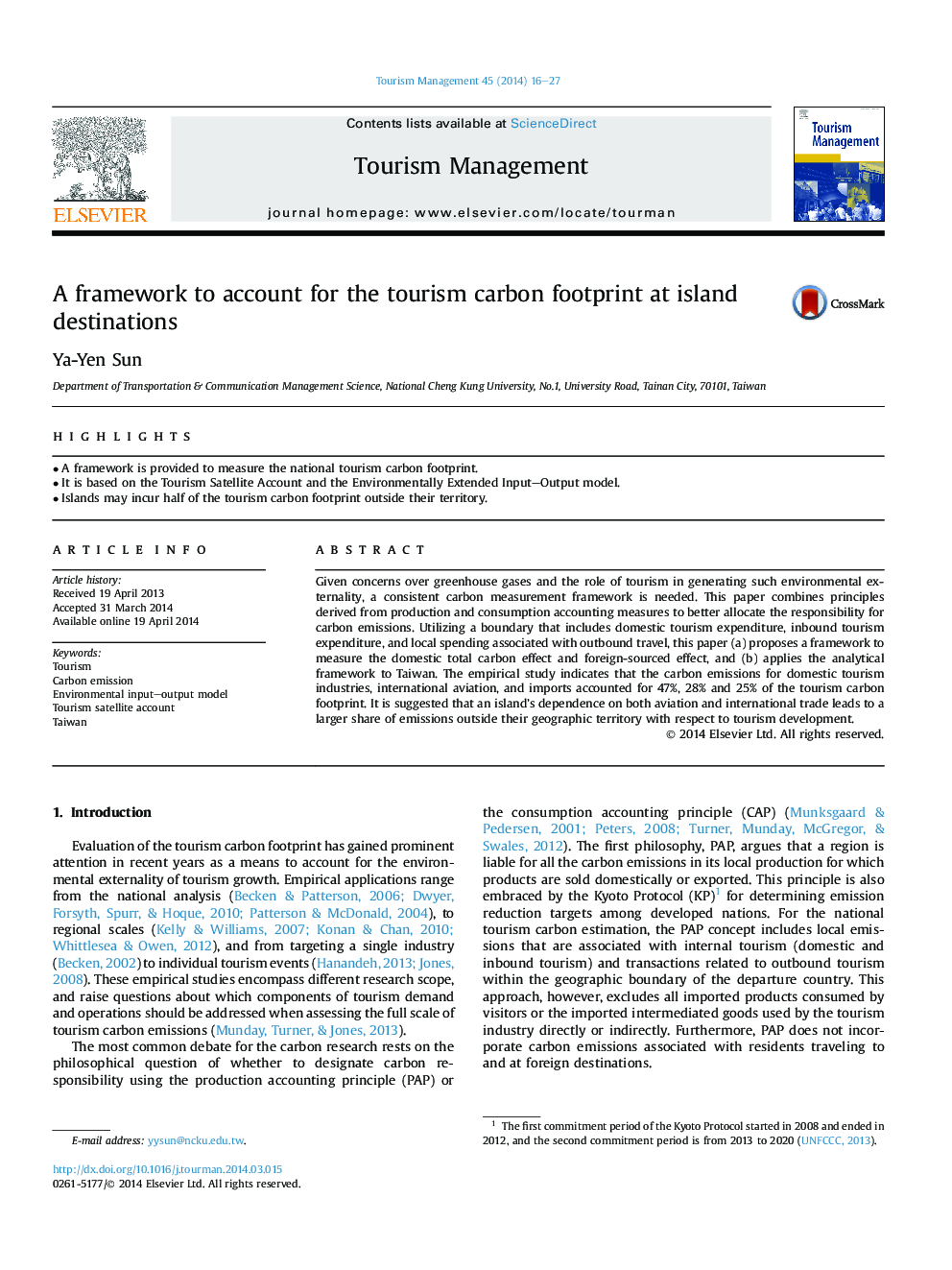| Article ID | Journal | Published Year | Pages | File Type |
|---|---|---|---|---|
| 1012055 | Tourism Management | 2014 | 12 Pages |
•A framework is provided to measure the national tourism carbon footprint.•It is based on the Tourism Satellite Account and the Environmentally Extended Input–Output model.•Islands may incur half of the tourism carbon footprint outside their territory.
Given concerns over greenhouse gases and the role of tourism in generating such environmental externality, a consistent carbon measurement framework is needed. This paper combines principles derived from production and consumption accounting measures to better allocate the responsibility for carbon emissions. Utilizing a boundary that includes domestic tourism expenditure, inbound tourism expenditure, and local spending associated with outbound travel, this paper (a) proposes a framework to measure the domestic total carbon effect and foreign-sourced effect, and (b) applies the analytical framework to Taiwan. The empirical study indicates that the carbon emissions for domestic tourism industries, international aviation, and imports accounted for 47%, 28% and 25% of the tourism carbon footprint. It is suggested that an island's dependence on both aviation and international trade leads to a larger share of emissions outside their geographic territory with respect to tourism development.
